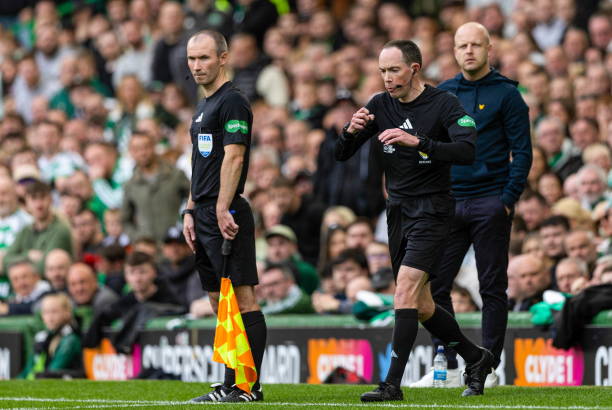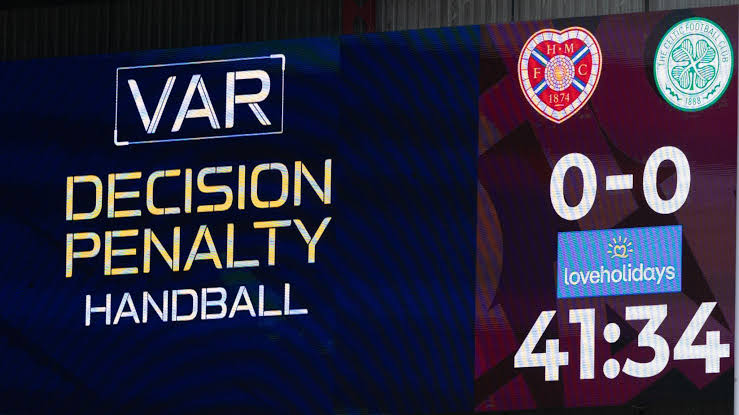Football fans in Scotland, particularly those of a Celtic allegiance, have been calling for greater refereeing transparency from the Scottish FA for years.
Now, it seems their voices have been heard. Under the stewardship of Willie Collum, the newly appointed head of refereeing, new measures have been introduced to shed light on contentious decisions that have often left clubs and supporters frustrated.
Among these initiatives is the launch of a monthly VAR podcast, aimed at explaining some of the key decisions made by officials using the Video Assistant Referee system.

This move has been welcomed by Celtic manager Brendan Rodgers, who has long been an advocate for clearer communication from the Scottish FA.
But it doesn’t stop there. The FA has also set up a new ‘Key Match Incident Review Panel’, a group comprising five individuals with extensive experience in Scottish football.
This panel’s job is to scrutinise major refereeing decisions and VAR interventions, providing weekly reports on the outcomes.
The first edition, which focuses on the weekend’s Scottish Premiership action, has already made waves, particularly with its review of Celtic’s 2-0 victory over Hearts.
The panel’s assessment of two crucial penalty incidents has brought much-needed clarity to what had been a heated debate.

Hearts manager Steven Naismith was vocal in his displeasure after the match, arguing that if Celtic’s James Penrice was awarded a penalty for handball, then a similar incident involving Liam Scales at the other end of the pitch should also have resulted in a penalty.
However, the SFA’s report seems to firmly reject Naismith’s claims, offering a detailed explanation of both incidents.
On the Scales situation, the panel cited the ‘t-shirt line’ rule, which dictates that any contact above this line on the arm is not considered a handball offence.

The report states: “The panel agreed this was a tough call for the referee but supported that VAR intervened and overturned the penalty kick for handball. The distance from the attacking player to the defender is too close and he has no time to react. The panel were not convinced that the ball struck a punishable part of the arm.”
As for the penalty awarded to Celtic, the SFA’s explanation focused on the position of Penrice’s arm, which was judged to have been in an unnatural position, thus making his body appear bigger and blocking the ball illegally.
“The panel discussed this decision at length,” the report reads, “with the majority deeming the on-field decision incorrect and believed the Assistant Referee was more of the lead on this one due to positioning. The majority believed this was a correct VAR intervention to award the penalty, noting that the defender made himself bigger and that his arm is out from the body.”

The contrasting outcomes of these two incidents highlight the nuanced approach the SFA is now taking in analysing decisions.
While Naismith may have felt hard done by, the report makes it clear that the situations were not as similar as they may have appeared at first glance. In both cases, the panel ultimately sided with the officials’ final decisions.
This shift towards transparency is a bold step for Scottish football. For too long, decisions that have shaped matches have gone unexplained, leading to anger and confusion from players, managers, and fans alike.

Now, with the introduction of these reviews, there’s a sense that referees are being held to a higher standard of accountability.
It also ensures that the rationale behind decisions is shared publicly, providing insight into what is often a thankless job.
Whether this move will lead to fewer controversial calls remains to be seen, but it’s undoubtedly a positive development for the game in Scotland.






